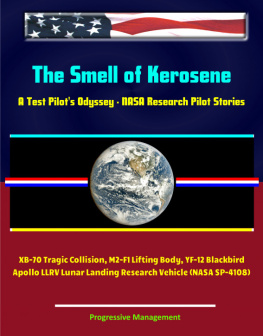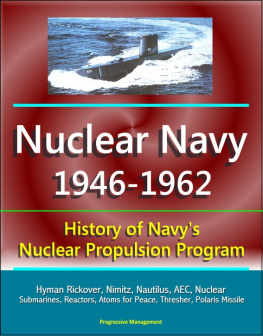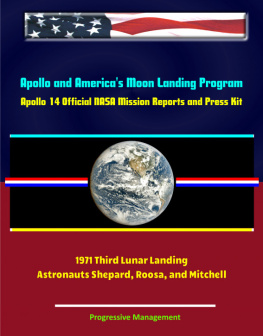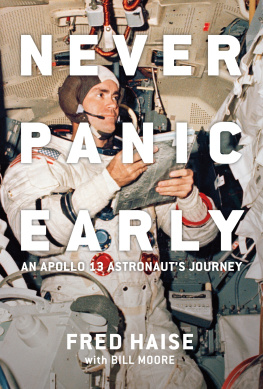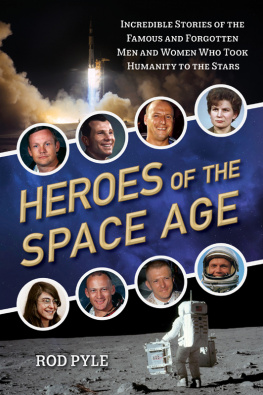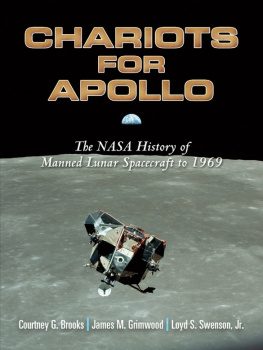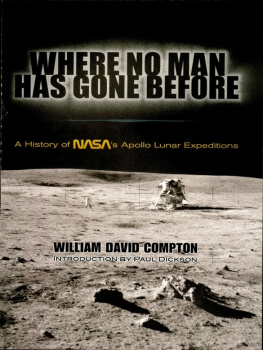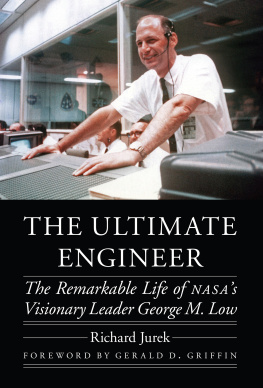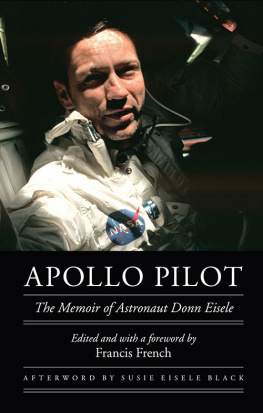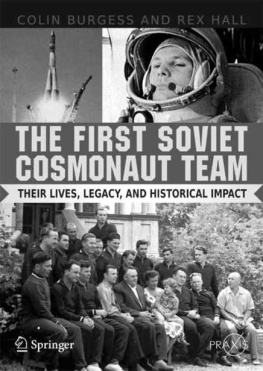The Smell of Kerosene: A Test Pilot's Odyssey- NASA Research Pilot Stories, XB-70 Tragic Collision, M2-F1Lifting Body, YF-12 Blackbird, Apollo LLRV Lunar Landing ResearchVehicle (NASA SP-4108)
National Aeronautics and Space Administration(NASA), World Spaceflight News, Donald L. Mallick, Peter W.Merlin
Smashwords Edition
Copyright 2012 Progressive Management
Questions? Suggestions? Comments? Concerns?Please contact the publisher directly at
Remember, the book retailer can't answer yourquestions, but we can!
* * * * * * * * * * *
Smashwords Edition, License Notes
This ebook is licensed for your personalenjoyment only. This ebook may not be re-sold or given away toother people. If you would like to share this book with anotherperson, please purchase an additional copy for each person youshare it with. If you're reading this book and did not purchase it,or it was not purchased for your use only, then you should returnto Smashwords.com and purchase your own copy. Thank you forrespecting the hard work of this author.
* * * * * * * * * * *
This is a privately authored news service andeducational publication of Progressive Management. Our publicationssynthesize official government information with original material -they are not produced by the federal government. They are designedto provide a convenient user-friendly reference work to uniformlypresent authoritative knowledge that can be rapidly read, reviewedor searched. Vast archives of important data that might otherwiseremain inaccessible are available for instant review no matterwhere you are. This e-book format makes a great reference work andeducational tool. There is no other reference book that is asconvenient, comprehensive, thoroughly researched, and portable -everything you need to know, from renowned experts you trust. Forover a quarter of a century, our news, educational, technical,scientific, and medical publications have made unique and valuablereferences accessible to all people. Our e-books put knowledge atyour fingertips, and an expert in your pocket!

The Smell of Kerosene: A Test Pilot'sOdyssey
NASA SP 4108
Donald L. Mallick with Peter W. Merlin
The NASA History Series
National Aeronautics and Space Administration* NASA History Office * Washington, D.C. 20546 2003
* * * * * * * * * * * *
The Smell of Kerosene tells the dramaticstory of a NASA research pilot who logged over 11,000 flight hoursin more than 125 types of aircraft. Donald Mallick gives the readerfascinating firsthand descriptions of his early naval flighttraining, carrier operations, and his research flying career withNASA and its predecessor agency, the National Advisory Committeefor Aeronautics (NACA).
Mallick joined the NACA as a research pilotat the Langley Memorial Aeronautical Laboratory at Hampton,Virginia, where he flew modified helicopters and jets, andwitnessed the NACA's evolution into the National Aeronautics andSpace Administration.
After transferring to the NASA FlightResearch Center (now NASA Dryden Flight Research Center) atEdwards, California, he became involved with projects that furtherpushed the boundaries of aerospace technology. These included thegiant delta-winged XB-70 supersonic research airplane, the winglessM2-F1 lifting body vehicle, and the triple-sonic YF-12 Blackbird.Mallick also test flew the Lunar Landing Research Vehicle (LLRV)and helped develop techniques used in training astronauts to landon the Moon.
This book puts the reader in the pilot's seatfor a "day at the office" unlike any other.
* * * * * * * * * * * *
Dedication
For my brother, Robert "Bob" Mallick, whotaught me how to swim and whose Army Air Corps Service in World WarII inspired my career in aeronautics.
* * * * * * * * * * * *
Contents
* * * * * * * * * * * *
Prologue Mach 3+
Outside the cockpit, the hush of the morningis shattered. It sounds like a cross between a chainsaw and someonebattering a manhole-cover with a jackhammer. I'm glad that I'minside the cockpit, like a titanium cocoon with quartz glasswindows. My pressure suit helmet muffles the clatter of the "startcart" and allows me to hear the gentle hiss of oxygen.
I continue to run through the pre-startchecklist with my backseater. The crew chief signals that thestarting unit is connected. As I ignite the left engine, observersbehind the aircraft see a bright green flash illuminate the exhaustduct. The engine roars to life. I repeat the procedure for theright engine. The roar outside must be deafening. I can see thatthe ground crew is wearing ear protectors, but a few are alsoholding their hands tightly to the sides of their heads.
I finish my checklist and verify that theflight controls are functioning properly. We have been in thecockpit now for nearly three-quarters of an hour. I release thebrakes and ease the throttle forward. The sleek jet rolls onto thetaxiway, its black skin soaking up the sunlight. I imagine that itlooks like a sinister shadow slipping toward the runway.
I line up for takeoff squarely on runwaycenterline, with nearly three miles of concrete in front of me. AsI push the throttles forward, the afterburners ignite almostsimultaneously. I advance the throttles to maximum and the enginespour blue fire out through the exhaust ejectors. The Blackbird eatsup runway as I let the speed build. At 210 knots indicatedairspeed, I pull back gently on the stick and separate theBlackbird and myself from Mother Earth.
Climbing through 10,000 feet, I accelerate toabout 400 knots. The pale blue sky rapidly darkens as I climbthrough 20,000 feet at nearly the speed of sound. At about 34,000feet, I push the nose over gently, controlling my angle of attackduring transition through a critical, high-drag region of theflight envelope. Having established a constant velocity of 450knots (about Mach 1.2 at this altitude), I begin a climb to cruisealtitude.
Racing toward 70,000 feet, I notice thecurvature of the Earth, rimmed in azure. My part of the sky is sodark now that it is almost black. Desert and mountains stretch outbelow. I can see the city of Las Vegas, the Colorado River, andmyriad dry lakebeds dotting the landscape. Soon, having reachedcruise altitude I watch my airspeed indicator pass Mach 3.0 (morethan 2,000 miles per hour).
The air outside is freezing cold, but itsfriction heats the surface of my airplane to more than 400F.Insulation and the air conditioning system keep the cockpit acomfortable 60F, and I am further protected by my bulky pressuresuit.
There is no more time for sightseeing. I turnnorth, toward the Canadian border. In a few minutes, I will beginto work my test points and gather data. Glancing once more out thewindow, I feel a sense of wonder. How does a small townPennsylvania boy like me now find myself flying near the edge ofspace?
Acknowledgements
My deepest thanks to Michael Gorn, chiefhistorian at NASA Dryden Flight Research Center, for his supportand encouragement. Dryden X-Press editor Jay Levine outdid himselfin designing the page layout of this book. Thanks to the DrydenPhoto Office for providing some of the outstanding pictures used toillustrate the story. Special thanks to Brian Nicklas of theNational Air and Space Museum archives for supplying hard to findhistoric images of NACA airplanes at Langley Research Center.Christian Gelzer, Betty Love, Sarah Merlin, and Curtis Peebles werekind enough to proofread the text. Steve Lighthill helped shepherdthe book through the publishing process.
* * * * * * * * * * * *
Wings of Gold
Roots - Western Pennsylvania
My roots lie deep in the steel country ofAmerica's heartland. My father was a native of western Pennsylvaniaand my mother had immigrated from Magedeburg, Germany, in 1904.They were married in 1922. My brother Bob was born the followingyear. They lived in a number of small towns in western Pennsylvaniawhile my father completed his apprenticeship as a machinist. Theyeventually settled on Neville Island when my dad went to work forthe Dravo Corporation. I was born on 4 October 1930 in nearbySewickley, Pennsylvania.
Next page
